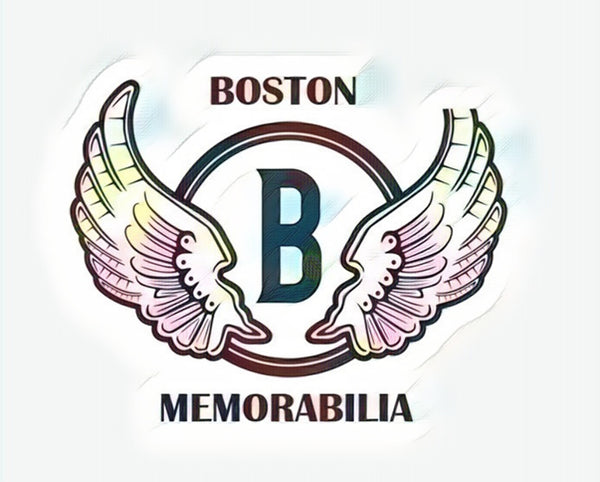The Best Certificates For Memorabilia
Share
The Ultimate Guide to Certificates of Authenticity for Memorabilia: Ensuring Your Collectibles Are the Real Deal
Imagine the thrill of owning Babe Ruth's signed baseball. Then, horror strikes. An expert reveals it’s a fake! Sadly, stories like this happen. That’s where Certificates of Authenticity (COAs) come in. They’re your shield against fraud. A COA states an item is real. It offers reassurance, yet understanding them is vital. This guide explores COAs. It will explain the different types, so you can protect your collection.
Understanding the Basics of Memorabilia Authentication
Let's get down to brass tacks. Authentication is a big deal in the memorabilia world. It's how we separate the treasures from the trash.
Why Authentication Matters for Memorabilia
Memorabilia holds value. It is valuable financially. More importantly, it is valuable emotionally. A signed photo connects you to a hero. A game-used jersey embodies history. Forgeries ruin that magic. They cost collectors money and heartbreak. Authentication protects your investment. It safeguards the stories behind the items.
The Role of a Certificate of Authenticity
Think of a COA as a guarantee. It states the item is what it seems. But it's not foolproof. A COA is only as good as the authenticator. A reputable COA adds value. It gives buyers confidence. Without it, selling becomes difficult. Always remember it is not an ironclad guarantee.
Common Red Flags to Watch For
Spotting fakes requires a sharp eye. Be wary of low prices. If a deal seems too good, it probably is. Poor quality autographs are another warning. Check for shaky lines or inconsistent ink. Generic COAs with missing details are suspect. Research the seller and the item. Due diligence prevents disappointment.
Third-Party Authentication: The Gold Standard?
Independent authentication is often seen as the best option. But why is that the case? Let's explore this more.
What is Third-Party Authentication?
Third-party authentication means an unbiased expert checks the item. This expert has no connection to the seller or buyer. This impartial assessment adds credibility. They examine autographs, game-used items, and other collectibles. Their opinion determines authenticity. This offers peace of mind.
Reputable Authentication Companies
Several companies lead the field. PSA/DNA is known for autograph authentication. James Spence Authentication (JSA) is another trusted name. Beckett Authentication Services also grades and authenticates. They have years of experience. Their reputations are solid. These companies use advanced techniques. They compare signatures to known examples. They examine the item's history. Their COAs carry weight in the market.
The Process of Third-Party Authentication
Getting an item authenticated involves a few steps. First, submit your item. Include any relevant information, like provenance. The company examines the item. Experts compare it to their database. If authentic, you get a COA. It includes a description and unique serial number. This process can take time, but it's worth it. The COA protects your investment.
In-House Authentication: When is it Acceptable?
Sometimes, the seller provides the COA. This is in-house authentication. Is it trustworthy? Let's explore the situation.
What is In-House Authentication?
In-house authentication means the seller authenticates the item. This is common with dealers or auction houses. They have experience with similar items. They issue a COA based on their knowledge. It can be convenient. Still, proceed with caution.
Potential Conflicts of Interest
The main issue is bias. The seller profits from the sale. They might be tempted to overlook doubts. This creates a conflict of interest. Always question in-house COAs. Do your homework before buying.
Situations Where In-House COAs Might Be Sufficient
In-house COAs aren't always bad. If you trust the seller, it can work. Established dealers with good reputations are safer. Check their history. Read reviews. Look for guarantees. If they stand behind their items, it's a good sign. Knowledge is power when it comes to authenticity.
Evaluating a Certificate of Authenticity: Key Features to Look For
A COA isn't just a piece of paper. It's a document with important information. Here are key features to check.
Detailed Description of the Item
A good COA describes the item well. It notes size, materials, and specific features. For example, a jersey COA should mention the brand. It should also state the player's name. It should describe any unique markings. This detail helps match the COA to the item.
Matching Serial Numbers and Holograms
Unique serial numbers are important. The COA and the item should have matching numbers. Tamper-evident holograms add security. They prevent fraud. Check that the hologram is clear. Ensure it hasn't been altered. These features link the COA to the specific item.
Company Information and Contact Details
A reputable COA includes company information. Look for a physical address, phone number, and website. Verify the information. Make sure the company is real. Contact them if you have questions. Lack of contact information is a red flag.
Protecting Your Investment: Storing and Maintaining Your Memorabilia and COAs
Protecting your memorabilia and COAs keeps them valuable. Proper storage is crucial. Let's see how to keep your collection safe.
Proper Storage Techniques for Memorabilia
Light, humidity, and temperature affect collectibles. Keep items out of direct sunlight. Use archival sleeves and cases. Control humidity to prevent damage. Store items in a cool, dry place. These steps preserve your memorabilia.
Storing and Preserving Your Certificates of Authenticity
COAs need protection, too. Store them separately from the item. Use acid-free sleeves. Keep them in a safe, dry place. This prevents damage. A damaged COA is less valuable.
Insurance Considerations for Valuable Memorabilia
Consider insuring valuable memorabilia. Document your collection. Keep records of purchases and appraisals. This helps with claims if something happens. Insurance protects your investment.
Assurance
Certificates of Authenticity are vital in the memorabilia world. They offer assurance, but you should understand the distinctions between them. Third-party authentication sets the standard. Thoroughly evaluate COAs, checking for detailed descriptions, serial numbers, and company data. Store your memorabilia properly. Also, take steps to safeguard the COAs. Due diligence protects your investment. It ensures your collection remains valuable and authentic.
